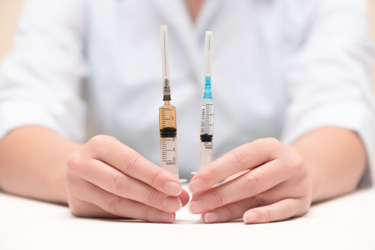U.S. Biosimilars Surge: Clinical Trials, Regulatory Shifts, And The Path To Dominance
By Joseph Pategou

In 2016, when I first examined the biosimilar market, Europe was the clear leader. The EU had introduced a biosimilar regulatory framework in 2004, which took effect in 2005, and had approved its first biosimilar, Omnitrope (somatropin), in 2006, setting the stage for early market adoption. Back then, the U.S. had only approved four biosimilars, while Europe had 23. Despite this gap, expectations were high for the U.S. to become a major hub and leader for biosimilars. Today, the question is: Where does the U.S. biosimilar market stand now?
The United States’ Edge In Clinical Trials And Biosimilar Approvals
The U.S. biosimilar market is expanding rapidly. The U.S. biosimilar market has experienced the most rapid expansion in the global market, achieving a remarkable compound annual growth rate (CAGR) of 97% between 2015 and 2021. While growth is expected to moderate in the coming years, forecasts indicate that the U.S. will maintain its leading position, with a projected CAGR of 26% through 2025. Globally, the market is expected to reach $74 billion by 2030.
That growth can be characterized by U.S. approvals thus far. According to the Center for Biosimilars, 64 biosimilars have been approved, with 42 already launched across 17 molecules as of January 2025. Adalimumab leads with 10 approvals and 10 launches, followed by pegfilgrastim and trastuzumab, each with six approvals and six launches. Moreover, over 97 biosimilars are currently in development, signaling sustained growth and investment in the sector.
What’s more, a study by IQVIA estimates that between 2025 and 2034, 118 biologics will lose patent protection, opening a $232 billion market for biosimilars. However, despite this potential, as of June 2024, only 12 molecules with patents expiring have biosimilars in development.
Regardless, the U.S. continues to pump billions of R&D dollars into clinical trials. According to EFPIA, R&D expenditure in the U.S. reached $71 billion in 2022, while global pharmaceutical R&D spending stood at $278 billion, with projections surpassing $300 billion by 2025. Between 2019 and 2023, U.S. R&D spending grew at an annual rate of 5.1%. Clinical trials account for a significant portion of this spending, with the 2023 PhRMA Survey revealing that over 48% of R&D expenditure is allocated to clinical trials. Meaning, the U.S. is poised for substantial investment into biosimilars if it collectively chose to expand its pipeline.
Regulatory And Industry Efforts Support Biosimilar Development
The regulatory landscape for biosimilars has evolved considerably over the past decade. In 2016, biosimilar life cycle management was primarily defined by two key phases: obtaining marketing authorization and launching the product. Regulatory considerations such as naming, labeling, substitution policies, quotas/tenders, and clinical trial data extrapolation played a crucial role in the approval process. Since then, studies have been conducted to better understand the key elements to consider for biosimilars and how the regulatory landscape and clinical studies can evolve.
A 2023 study on clinical efficacy trials and regulatory decision-making for biosimilars examined the relationship between quality assessments and clinical approvals. The results showed that in 67% of cases, quality and clinical assessments were aligned, with both either supporting or rejecting approval. In 11% of cases, major objections were identified in quality assessments but not in clinical data, while in 22% of cases, concerns were raised in clinical assessments but not in quality reviews. These findings support the argument that biosimilarity can be adequately demonstrated through analytical, functional, and pharmacokinetic studies, reducing the need for extensive clinical trials, according to an article published in BioDrugs.
In March 2024, the FDA and Duke-Margolis Center convened a workshop focused on innovative clinical trial design to improve efficiency and patient outcomes. Following these discussions, the FDA signaled openness to waiving Phase 3 trials for biosimilars on a case-by-case basis if pharmacokinetic (PK) and pharmacodynamic (PD) data sufficiently support clinical similarity.
Further regulatory changes in 2024 include eliminating switching study requirements for biosimilars seeking interchangeable status, a move expected to cut development costs by $75 million to $250 million and reduce approval timelines to six and a half to seven and a half years. If both interchangeability and Phase 3 studies are removed, costs could drop further to $50 million to $75 million, with development timelines compressed to five to six years. Additionally, the FDA introduced the Biosimilars Action Plan, and CMS implemented a temporary Medicare Part B payment increase, further facilitating biosimilar adoption. Medicare policy updates now allow biosimilar substitution during formulary updates, a key step in increasing market penetration.
Impact Of Biosimilars On The U.S. Market
Since the first biosimilar launch in 2015, patients and the healthcare system have saved nearly $36 billion, with $12.4 billion in savings in 2023. Notably, 60% of total biosimilar-related savings have occurred in the past two years, reflecting accelerated adoption. Biosimilars have contributed to nearly 2.7 billion days of patient therapy since 2015, with no meaningful differences in safety or clinical outcomes compared to their reference biologics. Increased competition from biosimilars also has enabled 495 million additional days of therapy, improving patient access to critical treatments. Despite their growing presence, biosimilars account for only 20% of the total biologics market, even though penetration has exceeded 80% in certain therapeutic areas.
About The Author:
 Joseph Pategou has authored over 30 articles in esteemed journals such as Cell and Gene Therapy, The Indian Economist, Labotech.eu, Drug Discovery & Development, and others. A former consultant at Boston Consulting Group in New York, he has held and continues to hold operational roles in biopharma companies. The views expressed are his own. He holds an MBA from New York University and a master’s degree from HEC Paris.
Joseph Pategou has authored over 30 articles in esteemed journals such as Cell and Gene Therapy, The Indian Economist, Labotech.eu, Drug Discovery & Development, and others. A former consultant at Boston Consulting Group in New York, he has held and continues to hold operational roles in biopharma companies. The views expressed are his own. He holds an MBA from New York University and a master’s degree from HEC Paris.
References:
- Biosimilars Council. (n.d.). Biosimilars Council. https://biosimilarscouncil.org
- Accessible Medicines. (n.d.). Accessible Medicines. https://accessiblemeds.org
- IQVIA Insights. (2020-2024). Biosimilars in the United States. https://www.iqvia.com/insights/the-iqvia-institute/reports-and-publications/reports/biosimilars-in-the-united-states-2020-2024
- IQVIA Insights. (2023-2027). Biosimilars in the United States. https://www.iqvia.com/insights/the-iqvia-institute/reports-and-publications/reports/biosimilars-in-the-united-states-2023-2027
- IQVIA Insights. (n.d.). Long-Term Market Sustainability for Infused Biosimilars in the U.S. https://www.iqvia.com/insights/the-iqvia-institute/reports-and-publications/reports/long-term-market-sustainability-for-infused-biosimilars-in-the-us
- U.S. Food and Drug Administration (FDA). (n.d.). Biosimilars Action Plan. https://www.fda.gov/drugs/biosimilars/biosimilars-action-plan
- BioSpace. (2023). Biosimilars Market Size Poised to Hit USD 150.26 Billion by 2033. https://www.biospace.com/biosimilars-market-size-poised-to-hit-usd-150-26-billion-by-2033
- AlphaSense Blog. (2023). Biosimilars Market Trends. https://www.alpha-sense.com/blog/trends/biosimilars-market/
- Health Affairs. (2023). 2023 Health Affairs Article. https://www.healthaffairs.org/doi/10.1377/hlthaff.2023.01532
- Center for Biosimilars. (n.d.). Biosimilar Approvals. https://www.centerforbiosimilars.com/biosimilar-approvals
- PhRMA Blog. (2023). Biosimilars Continue to Drive Market Competition and Increase Savings for Seniors. https://phrma.org/blog/biosimilars-continue-to-drive-market-competition-and-increase-savings-for-seniors
- Springer. (2023). Biosimilar Article. https://link.springer.com/article/10.1007/s40259-023-00631-4
- IPD Analytics. (2024). Biosimilar Pipeline Report 2H 2024. https://www.ipdanalytics.com/sample-reports-1/biosimilar-pipeline-report-2h-2024#:~:text=During%201H%202024%2C%20the%20FDA,further%20drive%20use%20and%20
savings. - Center for Biosimilars. (n.d.). Biorationality: FDA Launches a New Opportunity to Remove Redundant Trials of Biosimilars. https://www.centerforbiosimilars.com/view/biorationality-fda-launches-a-new-opportunity-to-remove-redundant-trials-of-biosimilarsa
